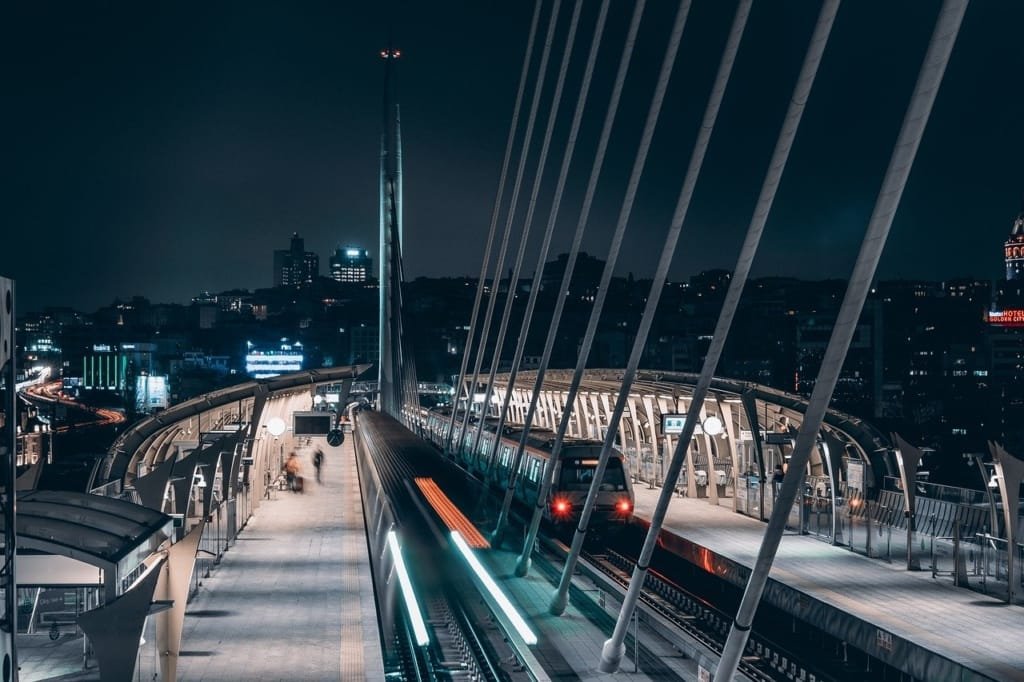A New Era for Istanbul Traffic: Paid Entry to Eminonu and Kadikoy
Istanbul is taking bold steps to address its infamous traffic congestion. As part of the “Istanbul Sustainable Urban Mobility Planning (SUMP)” initiative, a paid entry system will be introduced in two of the city’s busiest districts: Eminonu and Kadikoy. This pilot project, referred to as Congestion Pricing, aims to reduce traffic density, promote eco-friendly transportation, and improve the quality of urban life.

What is the Congestion Pricing System?
Congestion pricing is a system where vehicles are charged a fee to enter designated areas during peak hours. The goal is to:
- Decrease traffic congestion.
- Encourage the use of public transport.
- Reduce air pollution and carbon emissions.
Eminonu and Kadikoy: Pilot Areas for the Paid Entry System
The program begins in Eminonu, covering 6 square kilometers, with Kadikoy’s Moda district to follow shortly after. These districts were chosen due to their high traffic volumes and historical significance.
Key Features of the Paid Entry System
- Low Emission Zones (LEZ): Vehicles causing higher environmental damage will incur higher fees, while eco-friendly cars will benefit from reduced tariffs.
- Pilot Duration: Results from Eminonu and Kadikoy will be evaluated to determine whether the system will expand to other parts of Istanbul.
- Expected Impact:
- Traffic reduction by 10.1% by 2030.
- Further reduction by 12.8% by 2040.
Why is Istanbul Implementing Paid Entry?
Istanbul is ranked 65th globally for traffic congestion, according to the TomTom Traffic Index.
- Average speed: 23 km/h.
- Annual time lost in traffic: 104 hours.
- 10 km travel time: 20 minutes, 40 seconds.
Mayor Ekrem Imamoglu emphasized that this is Turkey’s first comprehensive Sustainable Urban Mobility Plan, designed to modernize transportation and reduce the city’s environmental footprint.
Innovative Measures to Combat Traffic Congestion
In addition to paid entry, Istanbul’s mobility plan includes:
- Increasing sea transport: To utilize Istanbul’s waterways more effectively.
- Bus-priority lanes: Promoting faster and more reliable public transport.
- Low Emission Zones (LEZ): Charging higher fees for older, polluting vehicles while incentivizing electric and hybrid cars.
Global Success Stories of Congestion Pricing
London (UK)
- Implemented: 2003.
- Fee: £15/day.
- Results:
- Traffic reduced by 20%.
- Public transport usage increased significantly.
Stockholm (Sweden)
- Implemented: 2007 (after public referendum).
- Results:
- Traffic reduced by 20%.
- Air pollution decreased by 14%.
Milan (Italy)
- Implemented: 2012 (Area C system).
- Fee: €5/day for fossil-fuel vehicles; electric and hybrid cars exempt.
- Results: Reduced carbon emissions and increased eco-friendly transport adoption.
Singapore
- Implemented: 1975 (ERP system).
- Results: Dynamic pricing during peak hours drastically reduced traffic and pollution.
New York (USA)
- Launching: January 2025.
- Fee: $9 for vehicles entering Manhattan south of 60th Street.
- Goal: Cut vehicle entries by 80,000 daily and fund $15 billion for mass transit improvements.
Benefits of Paid Entry Systems
Traffic Reduction:
Cities with congestion pricing have seen traffic drop by up to 40%, as fewer people choose to drive in restricted zones.Environmental Improvements:
- Reduced carbon emissions and improved air quality.
- Incentives for adopting eco-friendly vehicles.
Increased Public Transport Usage:
Public transport usage in cities like London and Stockholm increased by 5–10% after the introduction of paid entry.Economic Gains:
Funds generated from congestion charges are often reinvested in infrastructure improvements, including public transport.
Challenges and Considerations for Istanbul’s System
Public Acceptance:
Gaining support from residents is critical. Transparent communication and public consultations (e.g., referendums) can help build trust.Tariff Structure:
Fees should be affordable for eco-friendly vehicles while deterring high-emission cars.Pilot Project Evaluation:
Results from Eminonu and Kadikoy will shape the system’s expansion. Metrics like traffic reduction, pollution levels, and public feedback will be closely monitored.
How Paid Entry Will Affect Istanbul’s Future
Istanbul’s new traffic management approach represents a shift towards sustainability. By implementing congestion pricing and related measures, the city aims to:
- Alleviate traffic congestion.
- Encourage greener transportation methods.
- Enhance urban living conditions for its 16 million residents.
If successful, this system could set a precedent for other Turkish cities facing similar traffic challenges, such as Ankara and Gaziantep.
Conclusion: A Step Towards a Sustainable Istanbul 🌿
Istanbul’s paid entry system is not just about reducing traffic—it’s a comprehensive strategy to modernize transportation, reduce pollution, and make the city more livable. As the system rolls out in Eminonu and Kadikoy, the world will watch closely to see how this historic city tackles one of its most pressing challenges.
For those living or planning to invest in Istanbul, this initiative could significantly enhance the city’s appeal by offering smoother commutes and a healthier environment.
- Villa, Residential
- $1,075,000
Kalkan Marina Villa – Luxury Sea-Facing Villa with Private Pool
Kalkan, Antalya, Turkey- Beds: 3
- Baths: 3
- Garage: 1
- 300 m²
Contact us
Please quote property reference
Urban invests - 21000
Contact me
- Apartment, Residential
- $445,000
Skyland Istanbul – 2Bedroom with Green-Valley View
Sarıyer, Istanbul, Turkey- Beds: 2
- Bath: 1
- Garage: 1
- 117 m²
Contact us
Please quote property reference
Urban invests - 20971






